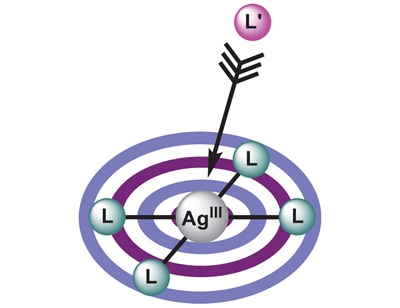|
Unlike its coinage metal counterparts, copper and gold, silver chemistry remains poorly developed and mostly restricted to the oxidation state +I, which embraces a large variety of coordination environments and types of ligand. Higher oxidation states, that is, +II and +III, are significantly less represented and predominantly adopt a square planar (SP-4) geometry around the metal center. In particular, well-defined d8 AgIII compounds are scarce, and include only a handful of examples exhibiting out-of-plane silver coordination. This Concept Article summarizes the strategies known to stabilize AgIII, as well as the unusual electronic structures (inverted ligand field) often found in these compounds. The intriguing case study of the expansion in the coordination number in AgIIICF3 compounds will be highlighted.
|

